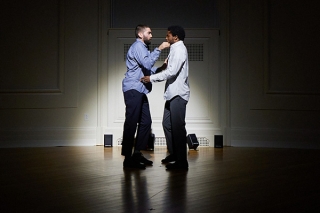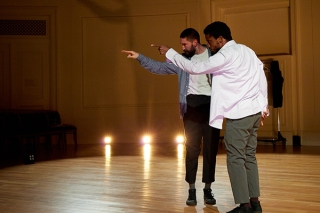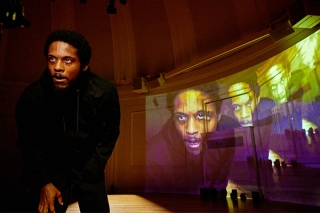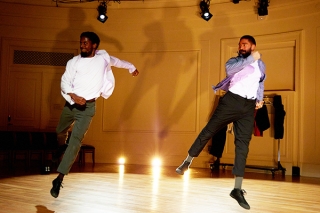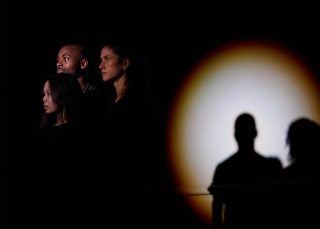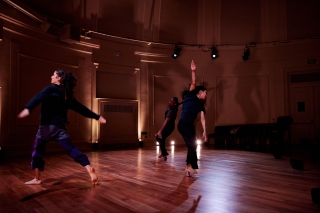In the realm of contemporary dance, Amadi “Baye” Washington and Sam “Asa” Pratt, known as the dance duo Baye & Asa, pushed the boundaries of movement and expression with their latest showcase held in The Dome at Yale Schwarzman Center. In two performances on January 26 and 27, they presented a twisted odyssey of the human condition. This article delves into the contrasting yet interconnected themes the duo portrayed through choreography. From the raw intensity of Suck it Up to the enigmatic allure of their in-progress piece, Baye & Asa invited audiences on a journey through the depths of the human psyche.
Suck it Up: A Treatise on Male Insecurity
As I step into the world of Suck it Up, choreographed and performed by Baye & Asa, I find myself encapsulated by a departure from the traditional notion of dance. These movements are not the graceful pirouettes of classical forms, but rather a raw, visceral display of motion. The dancers' bodies convulse and contort in erratic spasms, their limbs and faces twisting in a primal frenzy. This vivid display of aggression is an uncovering of the male façade; a revelation of emotions that bubble beneath the surface as men navigate the demands and expectations of patriarchal society.
Yet still, within the performance, there are moments of fleeting beauty reminiscent of classical art forms, in which the dancers briefly embody the pretty poise of ballet. Yet, these moments are swiftly engulfed by further ferocity of movement, plunging the audience into a chaotic and unsettled atmosphere. Through this deliberate action, Baye & Asa draw attention to the disturbing war between masculinity and femininity that takes place within every man, the basic need to fully express oneself and the societal expectation to maintain a visage of toughness. Adding to this complexity is the space between the two dancers’ bodies, intimate yet volatile, it becomes a stage for a delicate interplay of thought, reaction, and experience.
